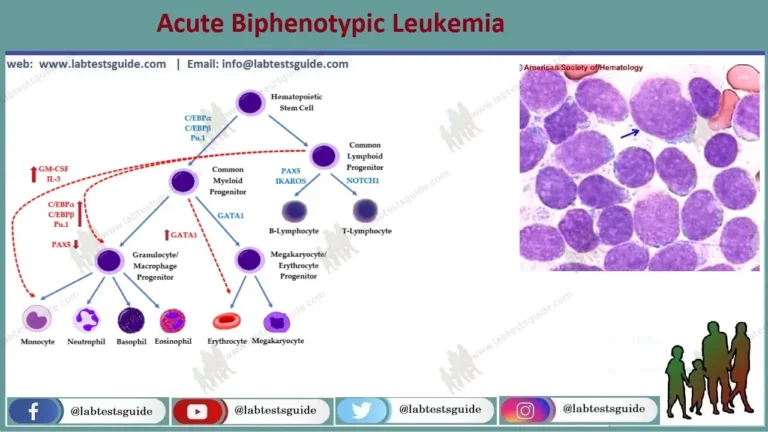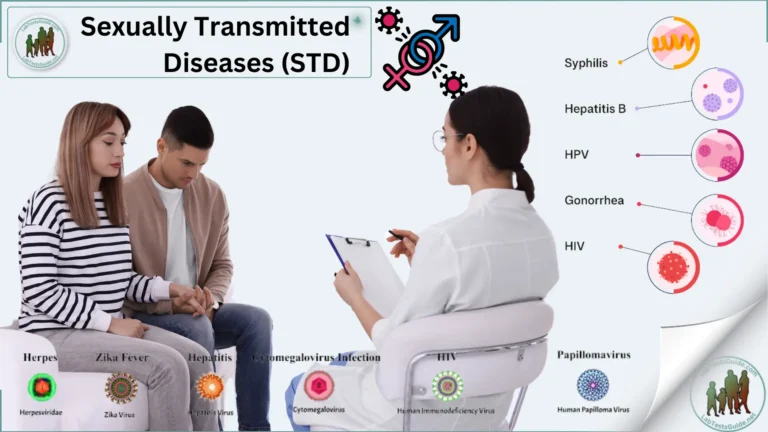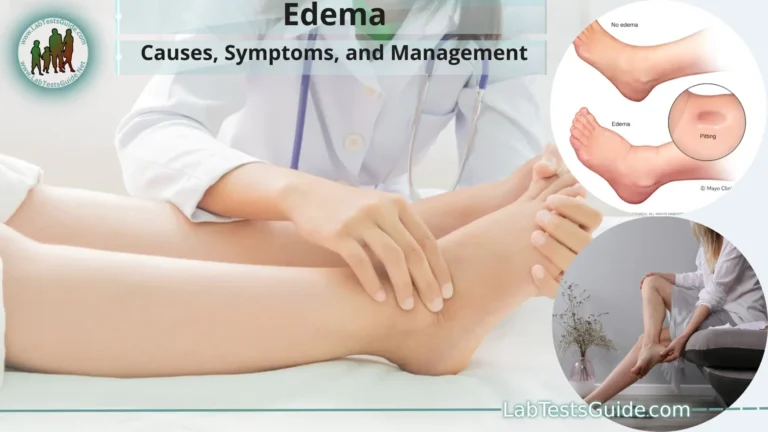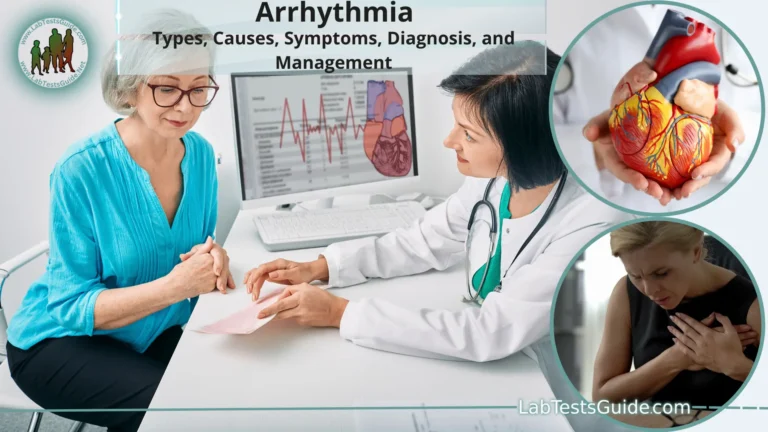Sickle Cell Disease Symptoms, Causes, Diagnosis, Treatement and Preventions
Sickle Cell Disease, also called Sickle Cell Anemia, is a group of inherited disorders that affect Hemoglobin, the main oxygen-carrying protein in red blood cells. Normally, Red Blood Cells are disk-shaped and flexible, allowing them to move easily through blood vessels. In sickle cell disease, red blood cells have a misshapen shape, usually crescent-shaped or “sickle-shaped,” due to a genetic mutation that affects the hemoglobin molecule. When red blood cells become bent or have difficulty moving, they can block blood flow to the rest of the body.
Key Points:
- Sickle cell anemia is a group of inherited blood diseases. Abnormal hemoglobin is produced.
- Red blood cells become hard and sticky and get stuck in small blood vessels, causing pain and other serious complications.
- There are several types of sickle cell anemia, some more serious than others.
- In the United States, sickle cell anemia is often detected at birth during routine newborn screening.
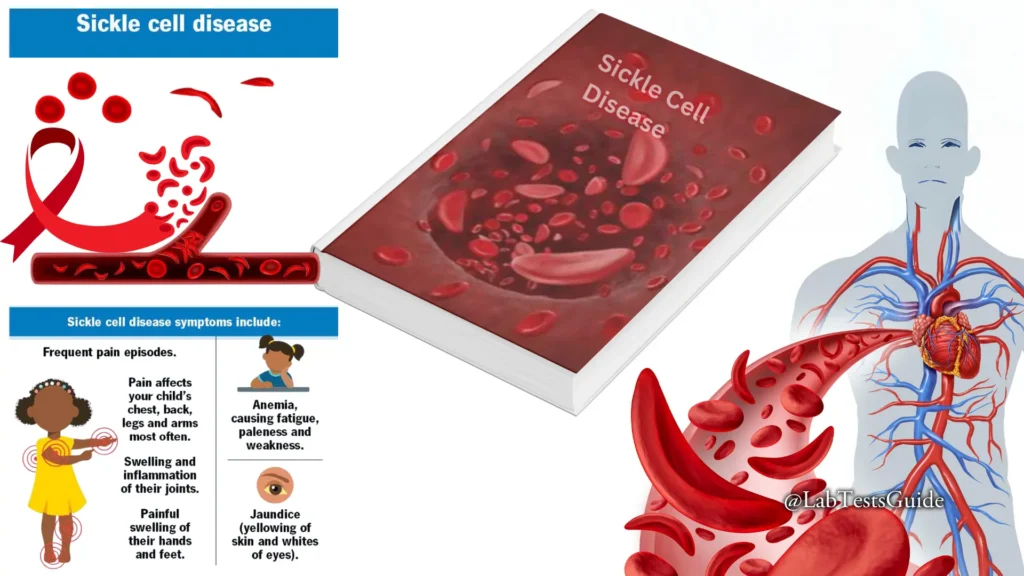
Sickle cell disease affects millions of people worldwide. It is most common in people whose ancestors are from Africa; Mediterranean countries such as Greece, Turkey, and Italy; the Arabian Peninsula; India; and Spanish-speaking areas of South America, Central America, and parts of the Caribbean.
Sickle cell disease is the most common inherited blood disorder in the United States, affecting approximately 100,000 Americans. The disease is estimated to affect 1 in 500 African Americans and 1 in 1,000 to 1,400 Hispanic Americans.
What is Sickle Cell Disease?
Sickle cell disease (SCD) is an inherited blood disorder, meaning it is passed down through parental genes. It causes the body to produce abnormal hemoglobin. Hemoglobin is the protein in red blood cells that carries oxygen to all parts of the body. When you have SCD, the tissues and organs in the body do not get enough oxygen.
What are the Symptoms of Sickle Cell Disease?
Symptoms can vary from person to person. They can be mild or severe. Some of them include:
- Anemia: This is the most common symptom. Having fewer red blood cells causes anemia. Severe anemia can cause dizziness, shortness of breath, and fatigue.
- Yellow skin, eyes, and mouth (jaundice): This is a common symptom. People with sickle cell disease do not live as long as normal red blood cells. They die faster than the liver can filter them. The yellow color is caused by a substance (bilirubin) that is released when red blood cells die.
- Painful crisis or sickle cell crisis: When sickle cells move through small blood vessels, they can get stuck. They can block blood flow and cause pain. Sudden pain can occur anywhere, but most commonly occurs in the chest, arms, and legs. Blocked blood flow can also lead to tissue death.
- Acute chest syndrome: This condition occurs when sickle cells stick together and block the flow of oxygen to the small vessels of the lungs. It can be fatal. It usually occurs suddenly when the body is under stress from an infection, fever, or dehydration. Symptoms can resemble pneumonia. They can include fever, aches, and a violent cough.
- Splenic sequestration (accumulation): The spleen becomes enlarged and painful when sickle cells become stuck in it. Fewer red blood cells can move, causing a sudden drop in hemoglobin levels. This can be fatal if not treated immediately.
- Stroke: A stroke is another sudden and serious problem that occurs with this condition. Sickle cells can block major blood vessels that carry oxygen to the brain. Any interruption in blood and oxygen flow to the brain can cause serious brain damage. If you have a stroke due to sickle cell disease, you are more likely to have a second or third stroke.
- Priapism: Sickle cells block blood vessels in the penis, causing severe pain. If not treated immediately, it can cause erectile dysfunction.
Symptoms of sickle cell disease can resemble other blood disorders or health problems. Always consult your doctor for a diagnosis.
Types of Sickle Cell Disease:
There are several types of sickle cell disease. The different types depend on the genes a person inherits from their parents.
- Hemoglobin SS (HbSS):
HbSS is a severe form that affects 65% of people with sickle cell disease. People with this form inherit a gene for hemoglobin S from each parent. Most or all of your hemoglobin is abnormal, causing chronic anemia.
- Hemoglobin SC (HbSC):
HbSC is a mild to moderate form that affects about 25% of people with the disease. People with this form inherit a gene for hemoglobin S from one parent. They inherit another abnormal type, hemoglobin C, from the other parent.
- Hemoglobin (HbS) beta-thalassemia:
People with this form have inherited a hemoglobin S gene from one parent. They have inherited an abnormal type called beta-thalassemia from the other parent. There are two subtypes:
- “Plus” (HbS beta +): This subtype affects about 8% of people with sickle cell disease and tends to be milder.
- “Zero” (HbS beta 0): This subtype affects about 2% of people with sickle cell disease and is more severe, similar to hemoglobin SS disease.
- HbSD, HbSE, and HbSO:
People with these forms of sickle cell disease inherit a gene for hemoglobin S and a gene that codes for another abnormal type of hemoglobin (“D,” “E,” or “O”). These rarer types of sickle cell disease vary in severity.
There are other, rarer forms, such as hemoglobin SD (HbSD), hemoglobin SE (HbSE), and hemoglobin SO (HbSO). People with one of these forms inherit one hemoglobin S gene and one gene that codes for another abnormal gene (D, E, or O).
What causes Sickle Cell Disease?
Sickle cell disease is an inherited disease caused by a genetic defect:
- You are only born with sickle cell disease if you inherit two genes, one from each parent.
- If you only have one gene, you are healthy, but you are a carrier for the disease. If two carriers have a child, there is a higher chance that their child will have sickle cell disease.
- Parents who carry one sickle cell gene have a 1 in 4 chance of having a child with sickle cell disease.
How is Sickle Cell Disease diagnosed?
Your doctor will take your medical history and do a physical exam. You may also have blood tests and other tests.
Many states routinely test newborns for sickle cell disease. Treatment can then begin as soon as possible. Early diagnosis and treatment can reduce the risk of problems.
A blood test called hemoglobin electrophoresis may be done. It can determine if you are a carrier of sickle cell disease. It can also determine if you have one of the diseases associated with the sickle cell gene.
Treatment of Sickle Cell Disease:
Treatment will depend on your symptoms, age, and overall health. It will also depend on the severity of the disease.
Early diagnosis and prevention of further problems are essential in treating sickle cell anemia. Treatment goals include preventing organ damage (including stroke), preventing infections, and treating symptoms. Treatment may include:
- Pain relievers: These are used for sickle cell crises.
- Drink plenty of water every day (8 to 10 glasses): This can prevent and treat pain attacks. Intravenous fluids may be needed in some cases.
- Blood transfusions: These can help treat anemia and prevent strokes. They are also used to dilute sickle hemoglobin with normal hemoglobin. They are used to treat chronic pain, acute chest syndrome, splenic sequestration, and other emergencies.
- Red blood cell exchange: This process removes some abnormal red blood cells and replaces them with healthy red blood cells from a donor. This may help improve symptoms.
- Vaccines and antibiotics: These are used to prevent infections.
- Folic Acid: This B vitamin helps prevent severe anemia.
- Hydroxyurea: This medicine helps reduce the frequency of pain attacks and acute chest syndrome. It may also help decrease the need for blood transfusions.
- Voxelotor: This medicine is approved for people 4 years and older to reduce pain attacks and improve anemia caused by the destruction of red blood cells.
- Crizanlizumab: This medicine is approved for people 16 years and older to reduce pain attacks.
- L-glutamine: This medicine is approved for people 5 years and older to reduce pain attacks.
- Regular eye exams: These are done to check for an eye disease called retinopathy.
- Bone marrow transplant: A transplant can cure some people with sickle cell anemia. The decision to have a transplant is based on the severity of the disease and the search for a suitable donor. These decisions should be discussed with your doctor. Transplants are only performed at specialized medical centers.
- Gene therapy: New gene therapies have been approved to treat sickle cell anemia. Discuss these treatments with your (or your child’s) doctor.
Can Sickle Cell Disease be prevented?
You can’t prevent sickle cell disease because it’s a genetic condition. If you’re pregnant, consider talking to your provider about genetic testing or genetic counseling.
How do I care for my child with sickle cell anemia?
If your child has sickle cell anemia, there are many things you can do to help manage the condition:
- Take your child to the doctor regularly.
- Make sure your child gets all recommended immunizations.
- Help your child get regular exercise and eat a heart-healthy diet.
- During a pain crisis, have your child drink plenty of fluids and take nonsteroidal anti-inflammatory drugs (NSAIDs).
If you can’t control the pain at home, take your child to the hospital to get stronger pain medication.
References
- American Academy of Pediatrics. Sickle Cell Disease: Information for Parents (https://www.healthychildren.org/English/health-issues/conditions/chronic/Pages/Sickle-Cell-Disease-in-Children.aspx). Last updated 9/2/2022. (Accessed on Sep 14, 2024)
- American Society of Hematology. Sickle Cell Disease (https://www.hematology.org/education/patients/anemia/sickle-cell-disease). (Accessed on Sep 14, 2024)
- Brandow AM, Liem RI. Advances in the diagnosis and treatment of sickle cell disease (https://www.ncbi.nlm.nih.gov/pmc/articles/PMC8895633/). J Hematol Oncol. 2022 Mar 3;15(1):20. (Accessed on Sep 14, 2024)
- Centers for Disease Control and Prevention. Sickle Cell Disease (SCD) (https://www.cdc.gov/ncbddd/sicklecell/facts.html). Last updated 7/6/2023. (Accessed on Sep 14, 2024)
- Merck Manual (Consumer Version). Sickle Cell Disease (https://www.merckmanuals.com/home/blood-disorders/anemia/sickle-cell-disease). Last modified 9/2022. (Accessed on Sep 14, 2024)
- National Heart, Lung, and Blood Institute. What is Sickle Cell Disease? (https://www.nhlbi.nih.gov/health/sickle-cell-disease) Last updated 7/22/2022. (Accessed on Sep 14, 2024)
- National Human Genome Research Institute. About Sickle Cell Disease (https://www.genome.gov/Genetic-Disorders/Sickle-Cell-Disease). Last updated 5/26/2020. (Accessed on Sep 14, 2024)
- National Library of Medicine (U.S.). Sickle cell disease (http://ghr.nlm.nih.gov/condition/sickle-cell-disease). Last updated 7/1/2020. (Accessed on Sep 14, 2024)
- Onimoe G, Rotz, S. Sickle cell disease: A primary care update (https://pubmed.ncbi.nlm.nih.gov/31990651/). Cleve Clin J Med. 2020 Jan;87(1):19-27. (Accessed on Sep 14, 2024)
- Park SH, Bao G. CRISPR/Cas9 gene editing for curing sickle cell disease (https://pubmed.ncbi.nlm.nih.gov/33455878/). Transfus Apher Sci. 2021 Feb;60(1):103060. (Accessed on Sep 14, 2024)
- Sickle Cell Disease | National Heart, Lung and Blood Institute | https://www.nhlbi.nih.gov/health/sickle-cell-disease – (Accessed on Sep 14, 2024)
- Sickle Cell Disease |Johns Hopkins Medicine | https://www.hopkinsmedicine.org/health/conditions-and-diseases/sickle-cell-disease – (Accessed on Sep 14, 2024)
Possible References Used



